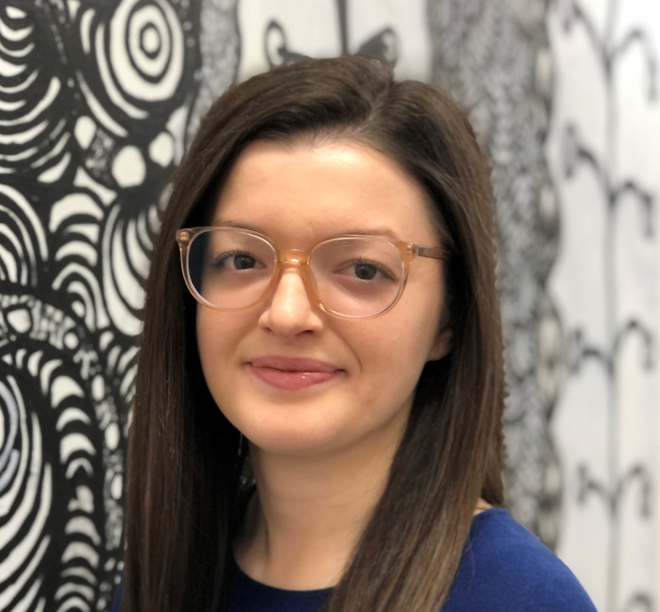News
Article
Nearly a Third of the Population Do Not Receive 7 – 9 Hours of Sleep
Author(s):
A new study found only 15% of people sleep the recommended 7 – 9 hours for ≥ 5 nights per week.
Hannah Scott, PhD
Credit: Flinders University

Almost one-third of the population does not receive the recommended 7 – 9 hours of sleep a night, Flinders University experts found.1 The study found 31% of adults worldwide had mean sleep durations outside of the recommended range.
“Clearly getting the recommended sleep duration range frequently is a challenge for many people to achieve, especially during the working week,” said lead investigator Hannah Scott, PhD, in the press release.2
The American Academy of Sleep Medicine recommends adults have ≥ 7 hours of sleep per night for optimal health and productivity as healthy levels of sleep lower the risk of drowsy driving, workplace accidents, mental health issues, obesity, heart disease, and Type 2 diabetes.3 Epidemiology studies found sleeping a mean of ≤ 6 hours per night was associated with an all-cause mortality risk.1 Likewise, getting above the recommended hours of sleep is not healthy; > 9 hours of sleep on average is also associated with an all-cause mortality risk.
Scott and colleagues used noninvasive, objective sleep monitoring to assess mean sleep duration, sleep duration variability, and how many participants reached the recommended hours of sleep in a large global sample with 67,254 adults. The study included more males (n = 52,523) than females and more younger and middle-aged adults than older adults (mean age: 50 years). Most participants were slightly overweight and located in Europe and America.
Participants were registered users of an under-mattress sleep sensor device, the Withings Sleep Analyzer, between July 2020 – March 2021. They were included in the study if they had ≥ 28 nights of sleep recordings, averaging ≥ 4 per week.
Participants self-reported data on age, sex, height, and weight when they first used their device. They had to provide consent for their de-identified data to be used for research.
Investigators assessed sleep durations over roughly 9 months with the Withing Sleep Analyzer, a thin inflatable mat roughly 20 cm x 60 cm placed under the mattress at chest height. The sleep sensor used ballistography to record pressure changes to approximate body movements, respiratory, heart rates, and time in and out of bed. Although a study found the Withing Sleep Analyzer overestimated sleep duration by roughly 30 minutes, compared to polysomnography, other research found the analyzer is comparable to other wearable and nonwearable sleep trackers.
Moreover, the team evaluated for associations between age groups, sex, and sleep duration for participants within and outside of the recommended hours of sleep. They categorized age groups as 18 – 25, 26 – 40, 41 – 50, 51 – 65, and ≥ 65.
Despite the health benefits of receiving 7 – 9 hours of sleep, the new study found only 15% of people sleep recommended hours for ≥ 5 nights per week. For individuals who reached a mean of 7 – 9 hours per night during the 9-month monitoring period, 40% of the nights consisted of sleep outside of the recommended sleep range.
“This is crucial because regularly not sleeping enough—or possibly too much—are associated with ill effects and we are only just realizing the consequences of irregular sleep,” Scott said.2
The team found female participants had significantly longer sleep durations than male participants (mean difference = 0.37 hours; 95% CI, 0.32 to 0.43).1 Additionally, middle-aged participants (41 – 65 years) had less sleep than younger (18 – 25 years) or older participants (≥ 65 years).
A sub-analysis examining sleep durations on the weekdays versus weekends revealed a significant mean difference of 11 (95% CI, 10 to 12; P < .001). Investigators found participants slept a mean of 28 minutes longer on weekend days than weekdays—only 61% of adults reached the recommended 7-9 hours of sleep during the week but 72% reached the recommended hours on the weekend.
Investigators highlighted how sleep needs vary over the lifespan due to health status, injury recovery, stress, and physical and mental activity.
“Given this, it should be acknowledged that participants in this sample and other study samples may have been misclassified as not routinely obtaining sufficient sleep,” investigators wrote.
The team outlined several limitations, including most of the participants being male and having unknown data on sleep disorders, comorbid conditions, sleep treatments, socio-economic status, and work status. Additionally, they pointed out, although the analyzer is designed to measure the sleep of only 1 person, it could have detected the sleep of a partner or a pet. Furthermore, comparisons across countries are limited, which could have affected the results as seasonal differences could impact sleep duration.
“Based on these findings, public health and advocacy efforts need to support the community and individuals to achieve more regular sleep within the recommended range for their age,” said investigator Danny Eckert, PhD, in the press release.
References
- Scott H, Naik G, Lechat B, et al. Are we getting enough sleep? Frequent irregular sleep found in an analysis of over 11 million nights of objective in-home sleep data. Sleep Health. Published online December 8, 2023. doi:10.1016/j.sleh.2023.10.016
- Wake-Up Call for Us All To Establish Regular Healthy Sleeping Patterns. EurekAlert! February 22, 2024. https://www.eurekalert.org/news-releases/1035384. Accessed February 28, 2024.
- Adult Sleep Duration Health Advisory. American Academy of Sleep Medicine. August 14, 2015. https://aasm.org/advocacy/position-statements/adult-sleep-duration-health-advisory/#:~:text=Although%20individual%20sleep%20needs%20vary,health%2C%20productivity%20and%20daytime%20alertness. Accessed February 28, 2024.





